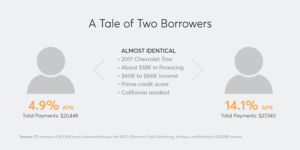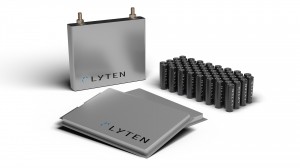

Follow us on social media:
Runtime: 9:35
0:08 Global Pushback on U.S. EV Incentive Proposal
1:10 U.S. UAW EV Incentive Likely to Be Dropped
1:59 More Details on Proposed EV Subsidies
3:46 Consumer Reports Says Car Loan Costs Soaring
4:49 Toyota Makes Big Investment in Kentucky
5:43 Ford Slams Maverick for SEMA
6:54 Batteries Have a Big Carbon Footprint
7:41 GM Hints at Low-Priced BEVV
Visit our sponsors to thank them for their support of Autoline Daily: Bridgestone, Intrepid Control Systems, Magna and Schaeffler.
This is Autoline Daily, the show dedicated to enthusiasts of the global automotive industry.
GLOBAL PUSHBACK TO U.S. EV SUBSIDIES
The Biden Administration wants half of all cars sold in the U.S. to be electric by the end of the decade, which is a very ambitious goal. So to get consumers on board, the Administration is proposing generous EV subsidies. But those subsidies are coming under heavy fire from all around the world. Twenty five countries, including Canada and Mexico, oppose the subsidies because they favor EVs made in the U.S. Anyone buying an EV would get a $7,500 subsidy. But if the battery is made in the U.S., they would get another $500. And if the EV was made with UAW labor, they would get another $4,500. After 2027 only vehicles made in the U.S. would get any subsidies. The countries that oppose this say those subsidies would violate WTO trade rules.
UAW EV SUBSIDIES LIKELY TO GET DROPPED
Here’s our Autoline Insight. The Biden Administration is decidedly pro-labor. And proposing extra subsidies to EVs made with union labor is going to earn it kudos from the labor movement. But those extra UAW subsidies don’t have a snowball’s chance in hell of making it to the final legislation. And the Biden Administration knows that. There are too many Democrats in Congress that represent states with car factories from foreign automakers that don’t have UAW labor. And they’re not going to put the workers from their state at a disadvantage. So we predict the UAW clause will get dropped from the bill. Even so, the Administration will still be able to tell its friends in labor that it went to the mat for them.
U.S. EV SUBSIDY DETAILS
Here’s some more details on those proposed EV credits. It would remove the 200,000 vehicle cap, so Tesla and General Motors customers would be eligible for them again. There’s also a $4,000 subsidy for buying a used EV. Commercial fleet customers would be able to write off 30% of the cost. So would people who buy an ebike or 3-wheel electric assist vehicle. There’s $3.5 billion to retool plants to make EVs, and $3 billion for zero-emission trains, airplanes, boats and even Hyperloop technology.
So what do you think about these subsidies? Should U.S. taxpayer money subsidize EVs that were made outside of the U.S.? Or should taxpayer money only go to EVs that were made in the USA?
CONSUMER REPORTS SAYS CAR LOAN COSTS SOARING
Consumer Reports says consumers are getting screwed with their car loans. According to a yearlong investigation by CR, which looked at nearly 860,000 loans from 17 major lenders, the average new car monthly payment is now nearly $600, about 25% higher than 10 years ago. In one instance CR found someone who would have spent almost $60-grand for a new Toyota Camry if they had paid off the entire loan, which had a 19% interest rate. Instead, they went delinquent. What’s more, CR found that even if consumers are similar financially and have comparable credit scores they’re getting wildly different interest rates. So, if you’re in the market for a new car, know your options and don’t let a lender try to slap an interest rate on the loan that they think they can get away with.
TOYOTA INVESTS HEAVILY IN U.S. OPS
Toyota recently announced it’s investing a few billion dollars into its U.S. manufacturing facilities to get them ready for future products. And a good chunk of that money is going to its Kentucky plant. It’s spending $461 million to install advanced equipment and technologies and make changes to the layout that will increase that speed at which it operates as well as its ability to make new products. The Kentucky plant currently produces the Camry, RAV4 and Lexus ES, but the ES is being moved back to Japan. And while some of those future vehicles will be electrified, Toyota is also using the investment to expand its powertrain production at the facility. It’s building a new line to make 2.4L turbocharged engines that will power a number of vehicles it produces in North America.
FORD MAVERICK COULD BE SEMA STAR
We always wanted Honda to take a slammed version of the Ridgeline to SEMA because we thought it would look really cool. But Ford has beat them to the punch and guess what? We think this slammed Maverick looks really cool. Coil-over shocks drop the ride height, custom wheels give it a retro vibe and 3D printed fender flares, front lip and cab spoiler add a sporty look. SEMA kicks off tomorrow and we’ll provide a link if you’d like to see more of what Ford will have on display.
20,000 MILE TRIP BEFORE NICKEL GOES INTO EV BATTERY
Electric vehicles produce zero tailpipe emissions, but the supply chain to make batteries has a big carbon footprint. For example, batteries for EVs need nickel and there’s a nickel mine in the Upper Peninsula in Michigan. But the ore that comes out of that mine has to get shipped to Finland to get melted down into pure nickel ingots. Then that nickel has to get shipped to China to get processed into EV battery cathodes. Some of those cathodes then get shipped to the U.S., where they go into batteries. So by the time that nickel actually ends up in an electric car, it’s travelled 20,000 miles. And that is one of the reasons why the U.S. needs to develop its own battery supply chain.
GM TO ANNOUNCE $30,000 EV
We learned a little bit more about GM’s plans for EVs on last week’s earnings call. GM is going to build 2 more battery plants in the U.S. than what it’s already announced. It’s going to convert a plant to make electric motors, and another one to make electric trucks, which we believe will be the truck plant in Flint, Michigan. At CES in January GM will unveil the electric Silverado pickup, after that comes an electric Chevrolet CUV priced at $30,000, and it hints there will be a cheaper EV revealed after that. By 2025, about 20% of GM’s assembly capacity will be for EVs, and by 2030 it will be 50%.
LYTEN BATTERY STARTUP ON AFTER HOURS
We wish we had a dollar for every time we heard someone say they had a battery breakthrough. But this time it could turn out to be true. Have you heard of a company called Lyten? L-y-t-e-n. They’ve come up with a way to use graphene to make EV batteries and if what they’re saying is true, it would instantly obsolete China’s lock on the raw material supply chain to make batteries. That’s what Autoline After Hours will be about this Thursday. We’ve got Dan Cook, the CEO of Lyten coming on the show. So tune in to what could be a game changing technology for the automotive industry.
And that brings us to the end of today’s report, thanks for making Autoline Daily a part of your day.
Thanks to our partner for embedding Autoline Daily on its website: WardsAuto.com
Seamus and Sean McElroy cover the latest news in the automotive industry for Autoline Daily.









